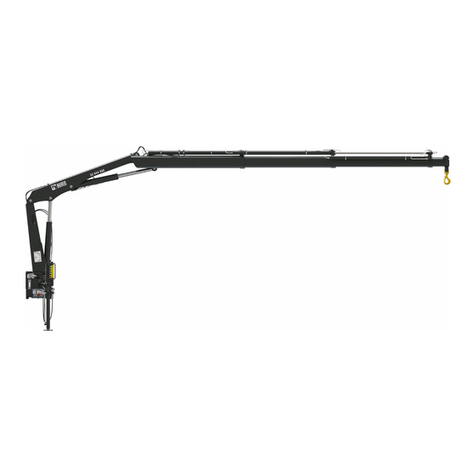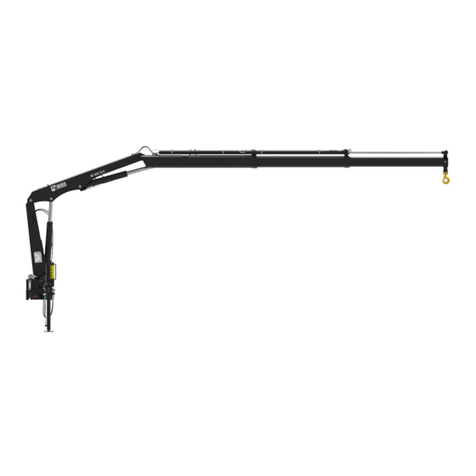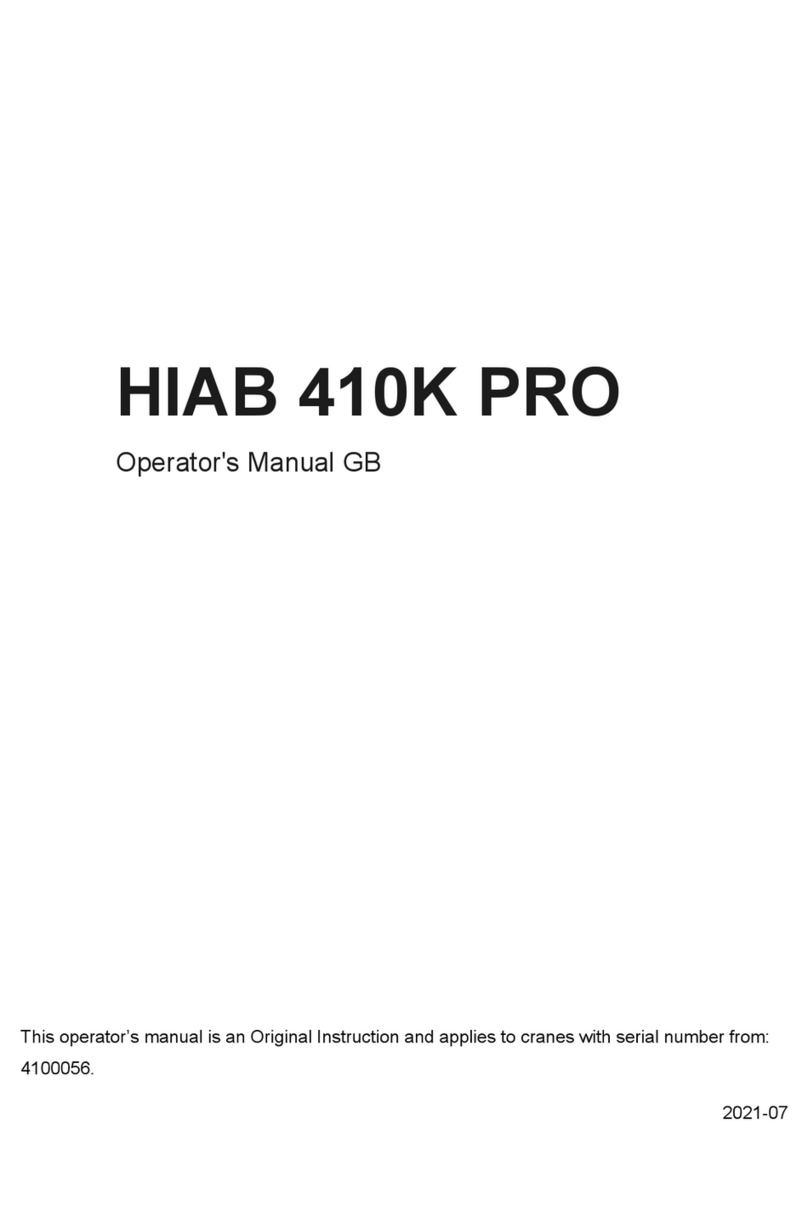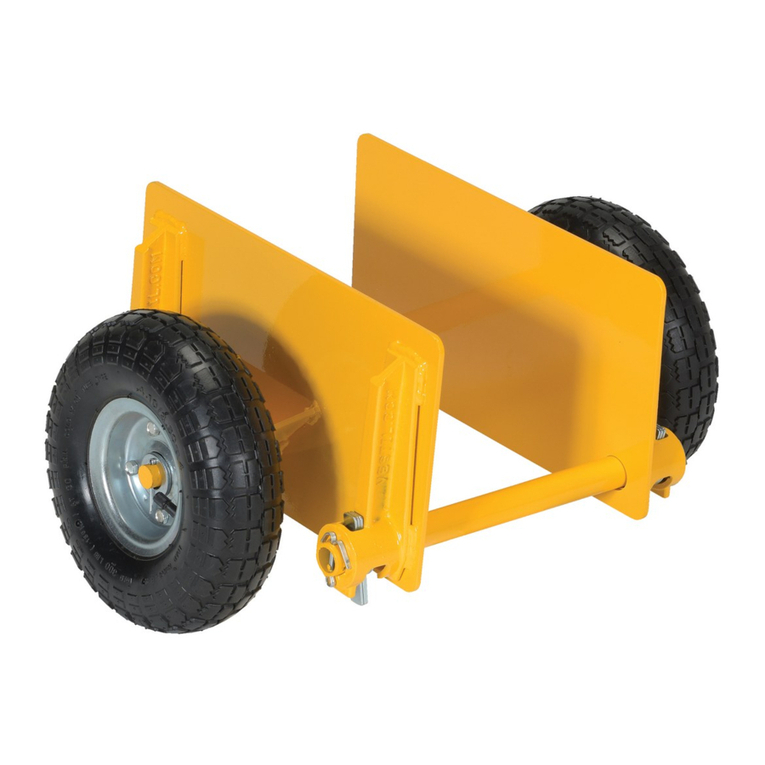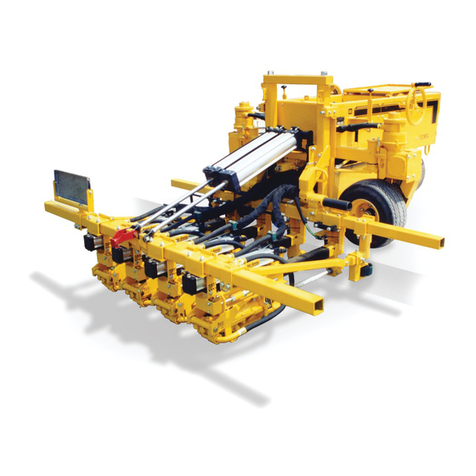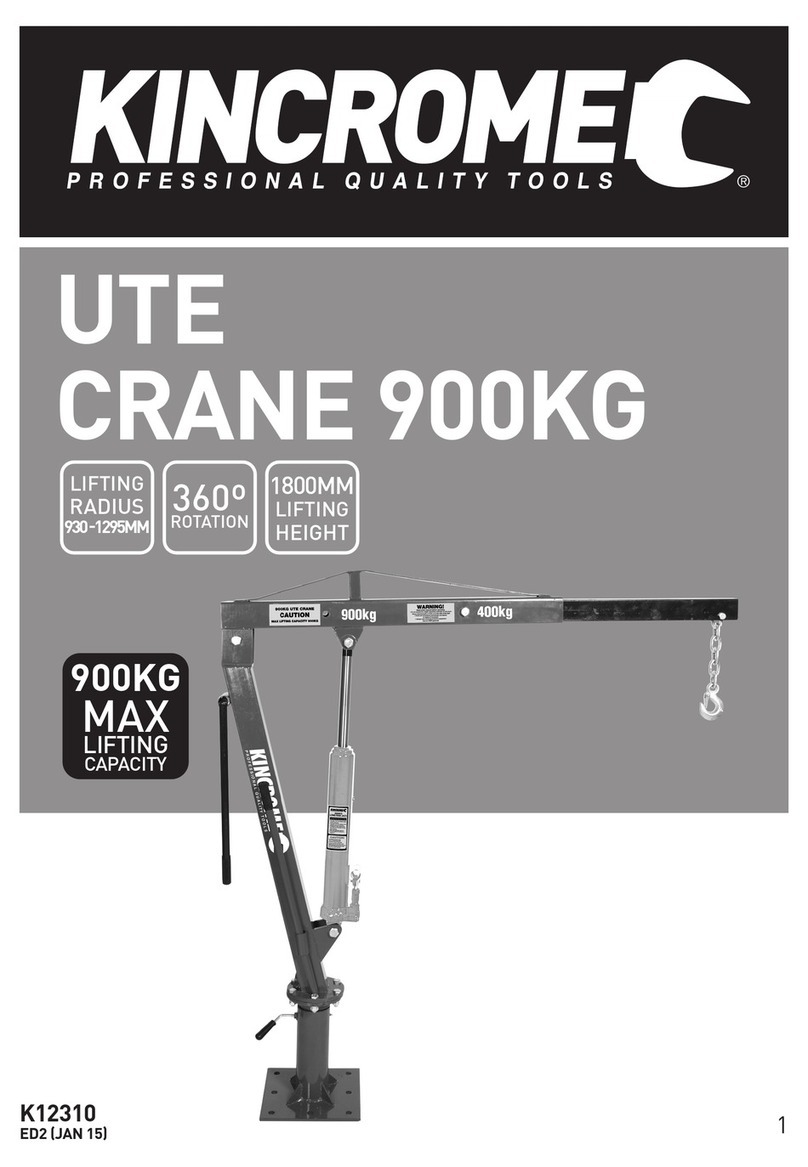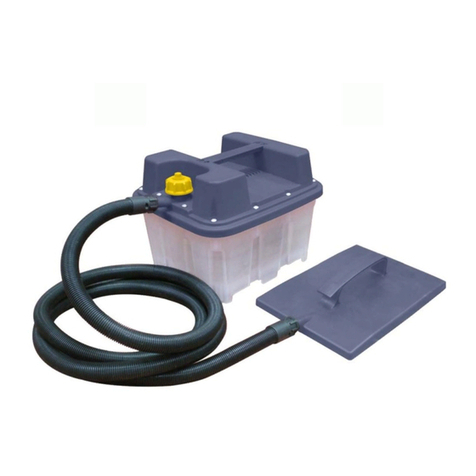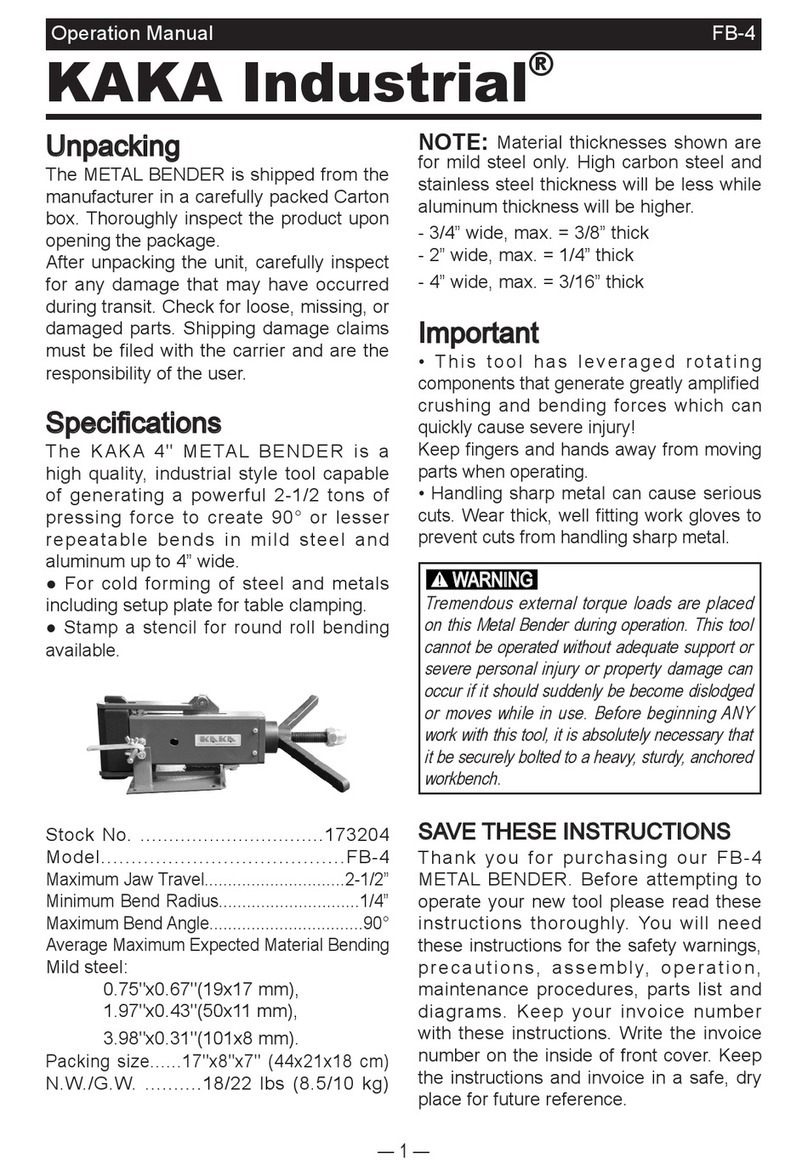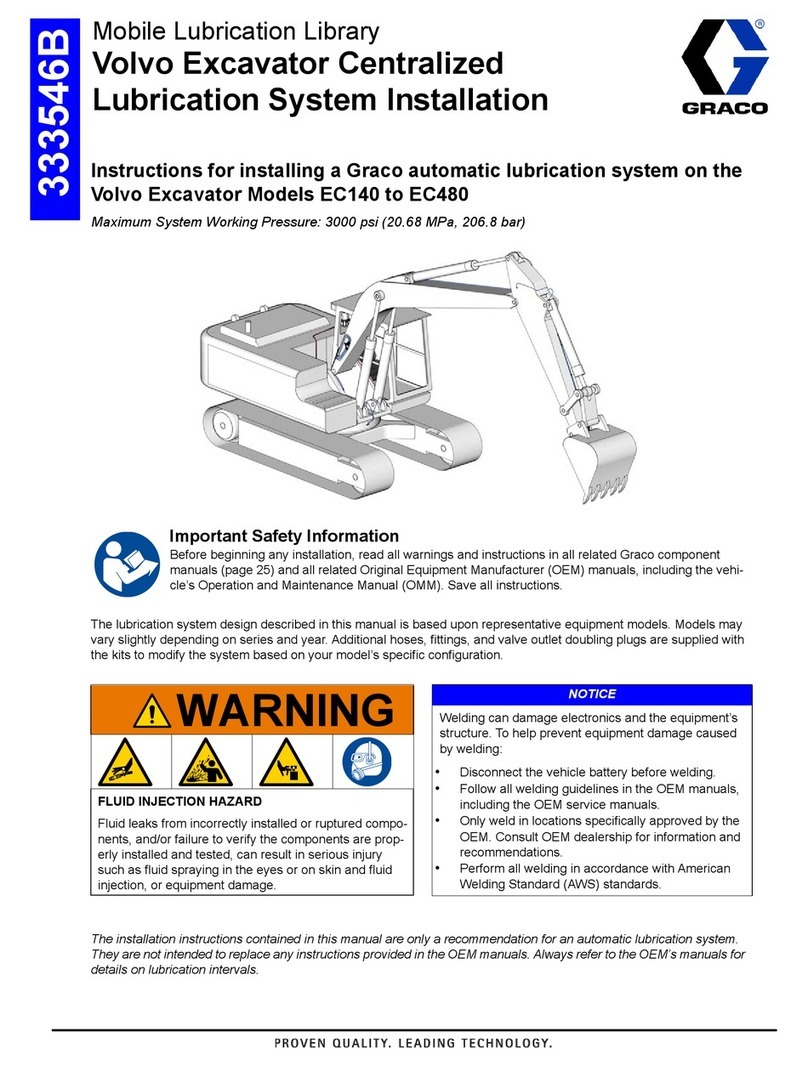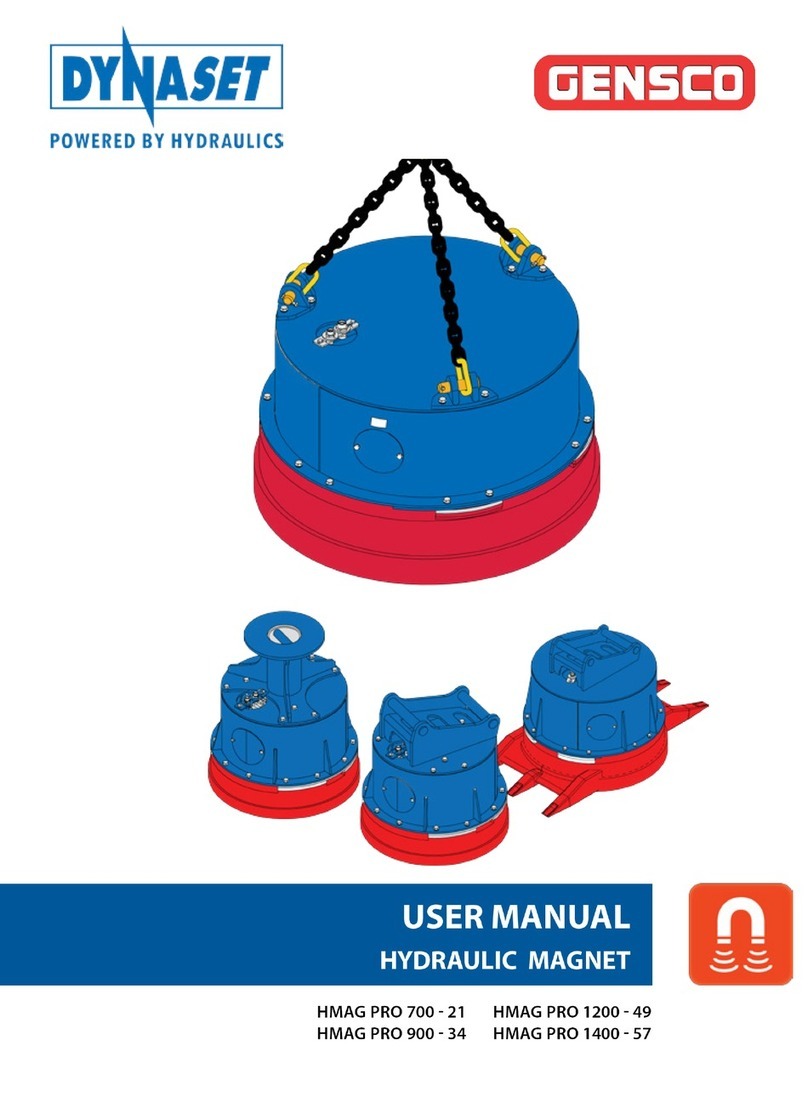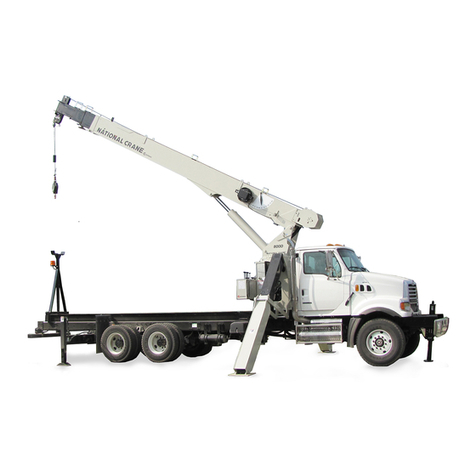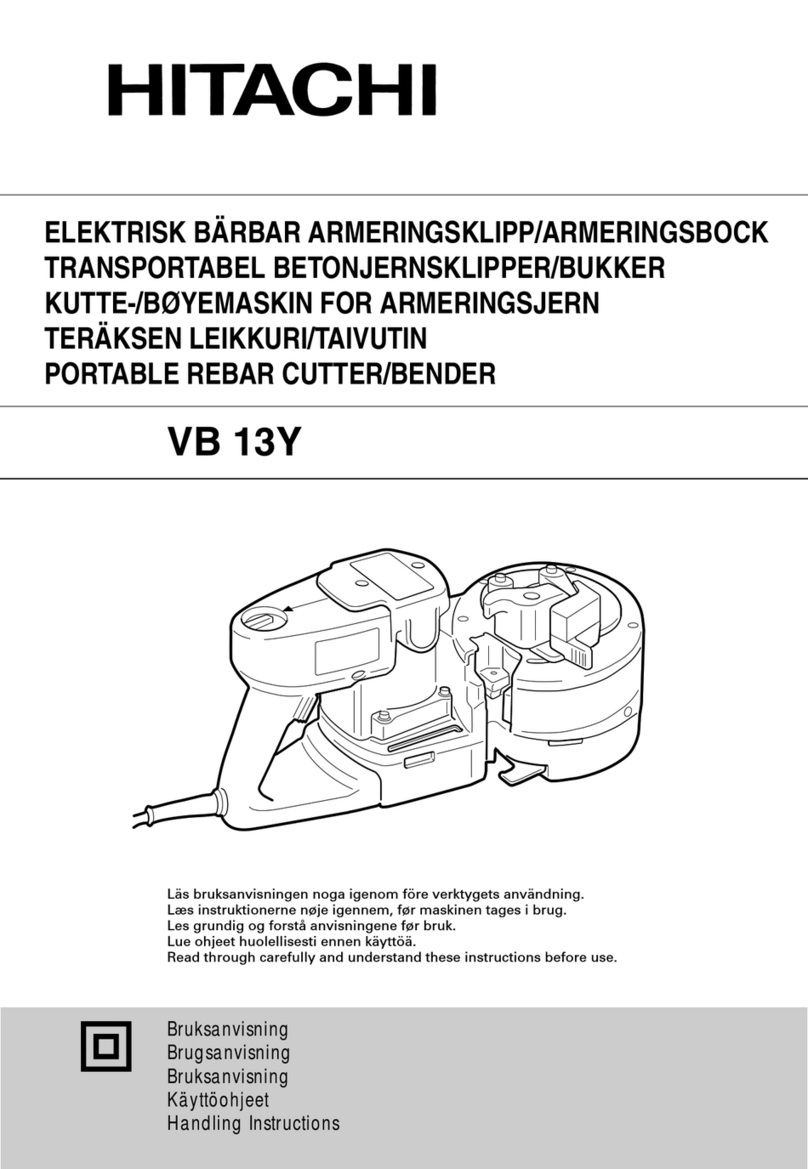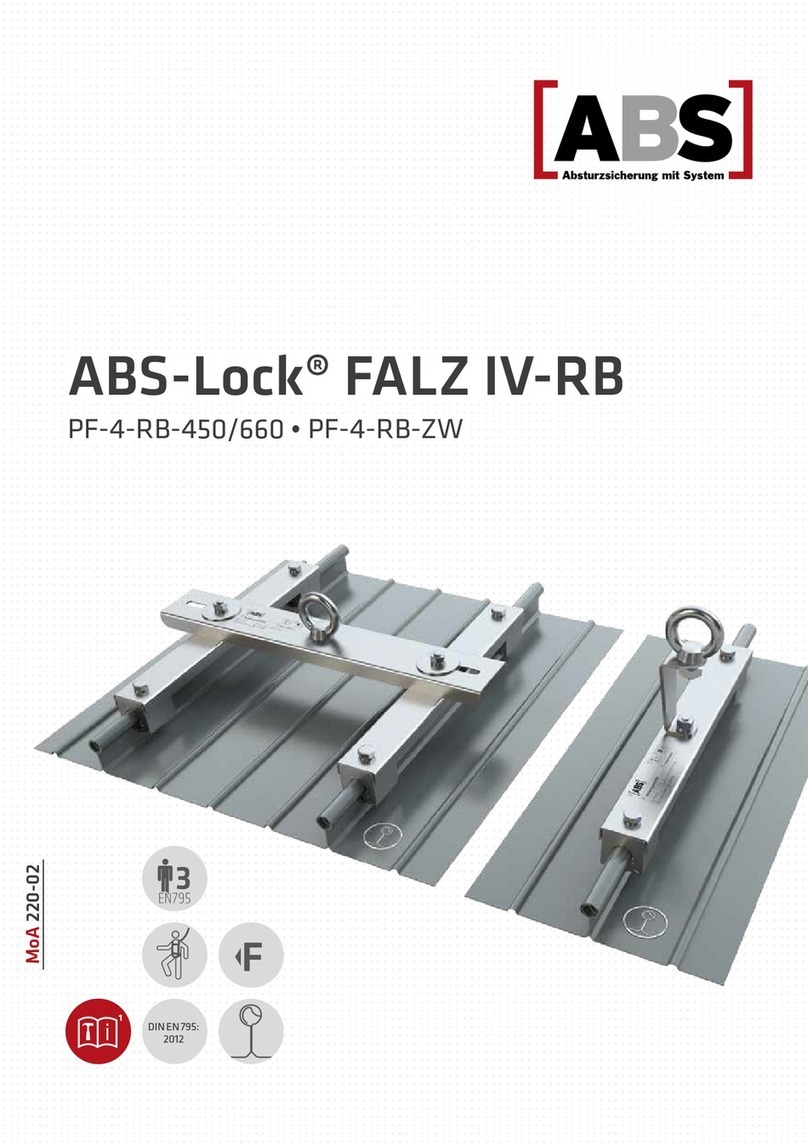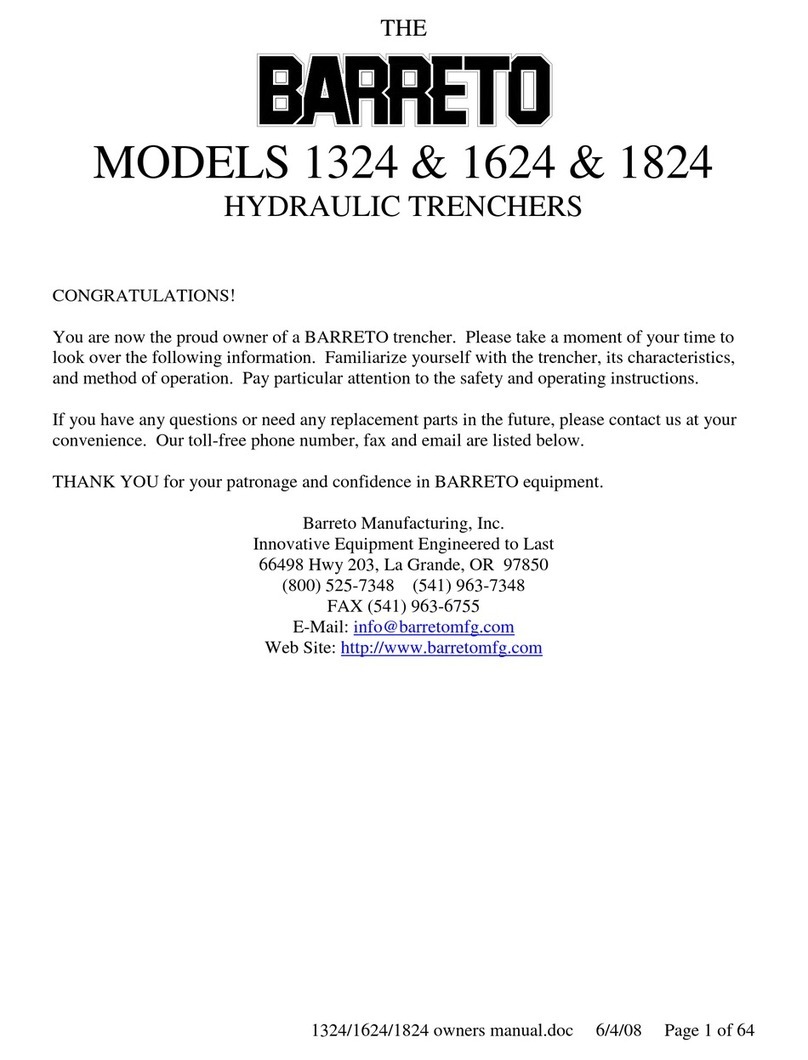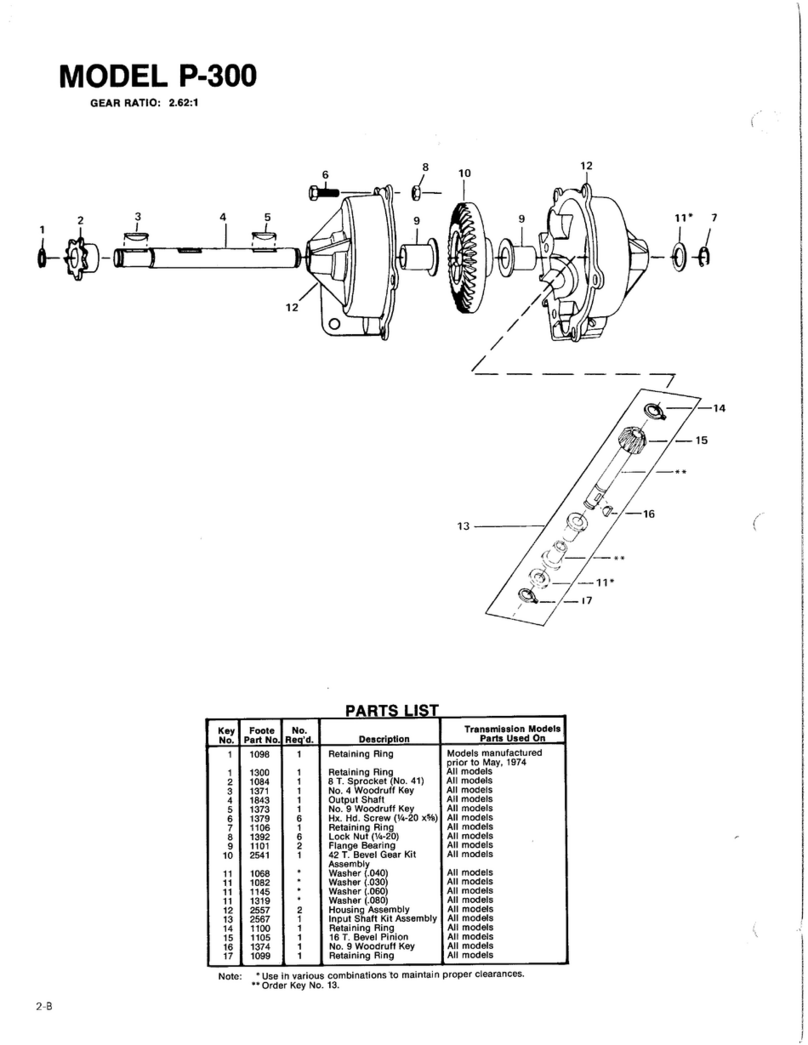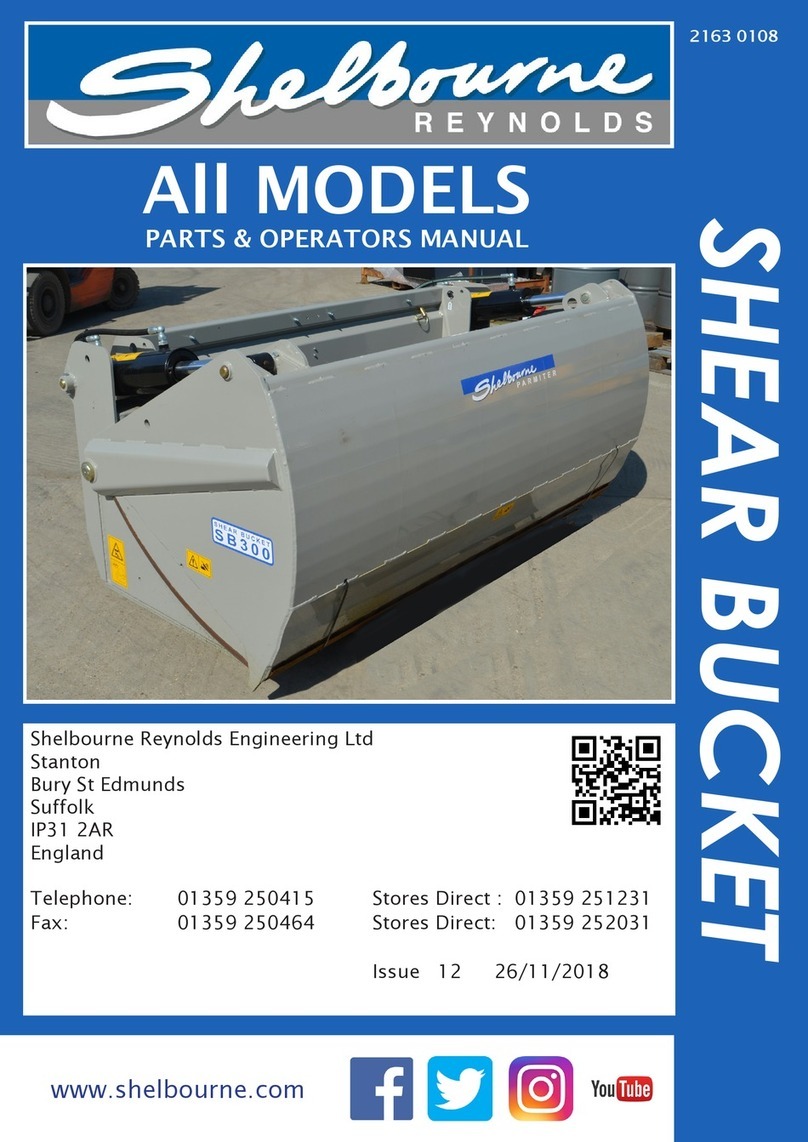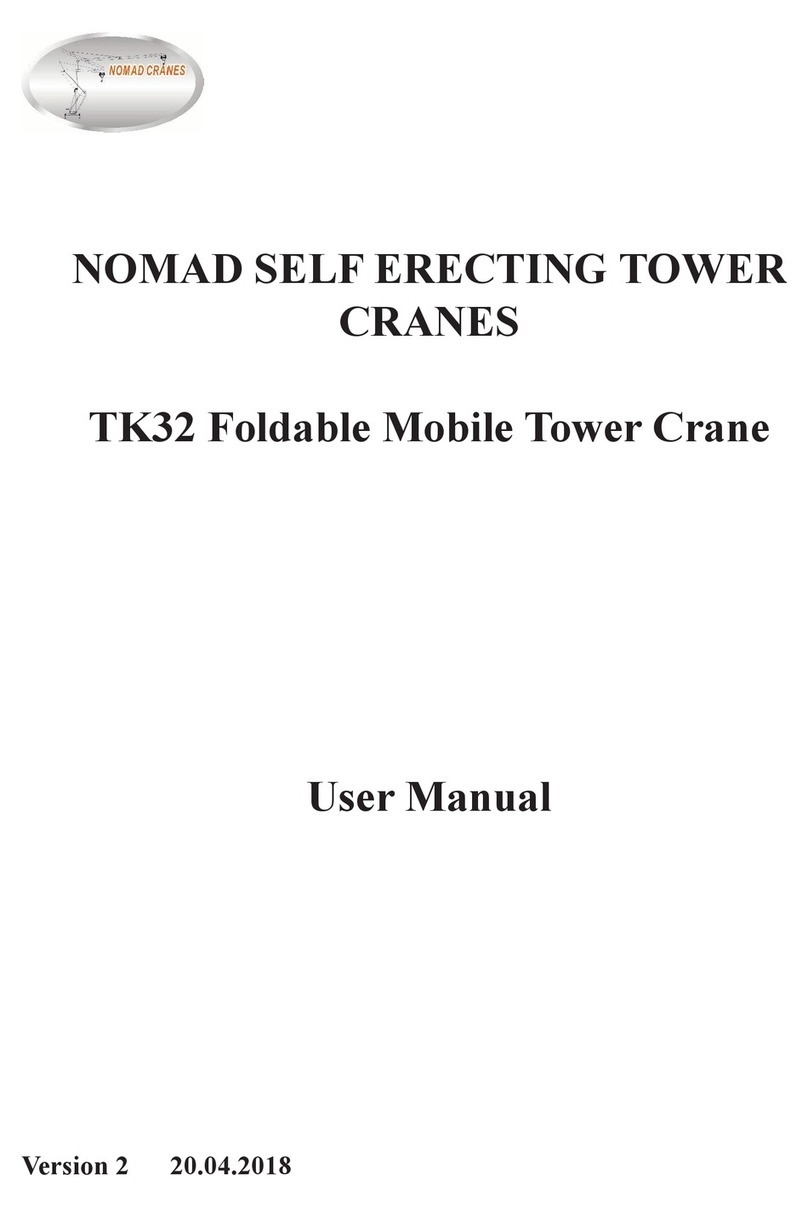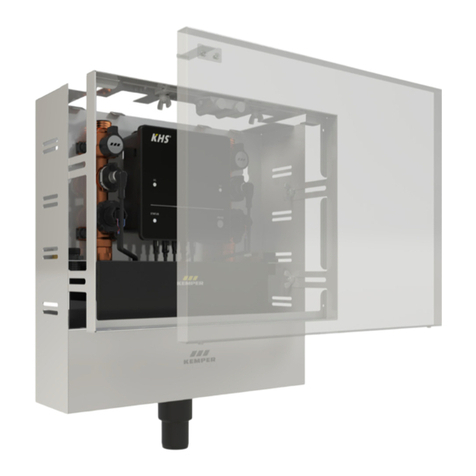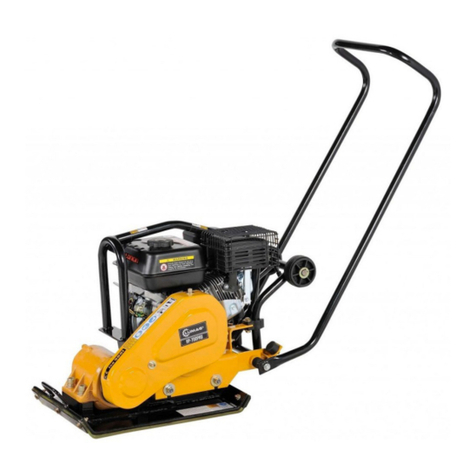HIAB 190TM Guide

Ver. : HIAB190TM-201510
190TM
OPERATING MANUAL
& SPARE PARTS LIST
EN
Cargotec Korea Ltd

190TM
OPERATING MANUAL
EN
Cargotec Korea Ltd

3
Contents
1. Foreword - - - - - - - - - - - - - - - - - - - - - - -- - - - - - - - - - - - - - - - - 6
2. The Operator’s Manual - - - - - - - - - - - - - - - - - - - - - - - - - - - - - - 7
2 - 1. Structure - - - - - - - - - - - - - - - - - - - - - - - - - - - - - - - - - - - - 7
2 - 2. Indications in the Operator’s Manual - - - - - - - - - - - - - - - - 8
2 - 3. Other indications - - - - - - - - - - - - - - - - - - - - - - - - - - - - - 9
3. Safety precautions and warnings - - - - - - - - - - - - - - - - - - - - - - 10
3 - 1. Study these instructions carefully - - - - - - - - - - - - - - - - - - 10
3 - 2. Knowledge required - - - - - - - - - - - - - - - - - - - - - - - - - - - 10
3 - 3. Operating conditions - - - - - - - - - - - - - - - - - - - - - - - - - - 11
3 - 4. Use and maximum load - - - - - - - - - - - - - - - - - - - - - - - - - 13
3 - 5. Preparations for use - - - - - - - - - - - - - -- - - - - - - - - - - - - - 14
3 - 6. Use of crane - - - - - - - - - - - - - - - - - - - - - - - - - - - - - - - - - 17
3 - 6 - 1. Starting crane operation - - - - - - - - - - - - - - - - - - 17
3 - 6 - 2. Crane operation - - - - - - - - - - - - -- - - - - - - - - - - - 19
3 - 6 - 3. Ending crane operation - - - - - - - - - - - - - - - - - - - 21
3 - 7. Driving with the crane - - - - - - - - - - - - - - - - - - - - - - - - - - 23
3 - 8. Use of lifting equipment - - - - - - - - - - - - - - - - - - - - - - - - 24
3 - 9. Use of demountable cranes - - - - - - - - - - - - - - - - - - - - - 25
3 - 10. Maintenance and service - - - - - - - - - - - - - - - - - - - - - - 26
3 - 11. Faults - - - - - - - - - - - - - - - - - - - - - - - - - - - - - - - - - - - - 28
3 - 12. Warranty - - - - - - - - - - - - - - - - - - - - - - - - - - - - - - - - - 29

4
4. Technical description - - - - - - - - - - - - - - - - - - - - - - - - - - - - - 30
4 - 1. Specification - - - - - - - - - - - - - - - - - - - - - - - - - - - - - - 30
4 - 2. Outline view - - - - - - - - - - - - - - - - - - - - - - - - - - - - - - 31
4 - 3. Lifting capacity table & working radius - - - - - - - - - - - - 32
4 - 4. Hydraulic diagram - - - - - - - - - - - - - - - - - - - - - - - - - - 33
5. General description - - - - - - - - - - - - - - - - - - - - - - - - - - - - - - - 34
5 - 1. Basic operation principle - - - - - - - - - - - - - - - - - - - - - - 34
5 - 2. Main components - - - - - - - - - - - - - - - - - - - - - - - - - - - 35
5 - 3. Base - - - - - - - - - - - - - - - - - - - - - - - - - - - - - - - - - - - - 36
5 - 4. Column - - - - - - - - - - - - - - - - - - - - - - - - - - - - - - - - - 36
5 - 5. Boom system - - - - - - - - - - - - - - - - - - - - - - - - - - - - - - 37
5 - 6. Control valve - - - - - - - - - - - - - - - - - - - - - - - - - - - - - - 37
5 - 7. Outrigger system - - - - - - - - - - - - - - - - - - - - - - - - - - - 38
5 - 8. Winch - - - - - - - - - - - - - - - - - - - - - - - - - - - - - - - - - - - 39
5 - 9. Top seat - - - - - - - - - - - - - - - - - - - - - - - - - - - - - - 39
5 - 10. Electric OLP system [option] - - - - - - - - - - - - - - - - 39
5 - 11. Anti two block system [option] - - - - - - - - - - - - - - - - 40
5 - 12. PTO & Pump - - - - - - - - - - - - - - - - - - - - - - - - - - 41
5 - 13. Oil tank - - - - - - - - - - - - - - - - - - - - - - - - - - - - - - 41
6. Operating - - - - - - - - - - - - - - - - - - - - - - - - - - - - - - - - - - - - - 42
6 - 1. Before operating the crane - - - - - - - - - - - - - - - - - - - - 42
6 - 2. Warming up when cold weather - - - - - - - - - - - - - - - - - 42
6 - 3. Operating the outrigger - - - - - - - - - - - - - - - - - - - - - - - 43
6 - 4. Operating of crane - - - - - - - - - - - - - - - - - - - - - - - 44
6 - 5. Overwinding alarm - - - - - - - - - - - - - - - - - - - - - - - - 46
6 - 6. After operating the crane ( for driving ) - - - - - - - - - - - 47

5
7. Safety instruction when operating - - - - - - - - - - - - - - - - - - - - 48
8. Preventive Service & Maintenance - - - - - - - - - - - - - - - - - - - 50
8 - 1. Daily inspection - - - - - - - - - - - - - - - - - - - - - - - - - - - - 50
8 - 2. Slewing bearing & mounting bolts - - - - - - - - - - - - - - - 51
8 - 3. Wire rope - - - - - - - - - - - - - - - - - - - - - - - - - - - - - - - - 51
8 - 4. Changing a filter insert - - - - - - - - - - - - - - - - - - - - - - - 55
8 - 5. Inspection point when operating - - - - - - - - - - - - - - - - - 57
8 - 6. Inspection after operating - - - - - - - - - - - - - - - - - - - - - 57
8 - 7. Inspection & maintenance after 1 month operation - - - 57
8 - 8. Inspection & maintenance after 6 months operation - - - 58
9. Lubrication - - - - - - - - - - - - - - - - - - - - - - - - - - - - - - - - - - - - - 59
9 - 1. Hydraulic oil changing - - - - - - - - - - - - - - - - - - - - - - 59
9 - 2. Lubrication chart - - - - - - - - - - - - - - - - - - - - - - - - - - - - 61
10. Fault tracing - - - - - - - - - - - - - - - - - - - - - - - - - - - - - - - - - - - 62
Appendix 1 : Wind speeds - - - - - - -- - - - - - - - - - - - - - - - - - - 64
Appendix 2 : Signals when using a crane - - - - - - - - - - - - - - - - - 65

6
1. Foreword
This operator’s manual for HIAB 190TM teaches you the right way to
operate and maintain your crane.
In this Operating manual are :
- Important safety precautions and warnings
- Important directions for use
- An explanation of the arrangement of Operator’s manual
- An explanation of the directions in the Operator’s manual
▲DANGER
If you have not studied the Operator’s Manual for
your crane carefully, this can lead to fatal
accidents or serious damage.
Thus you should :
1. Study the entire Operator’s Manual carefully
2. Use the crane only after having done so
3. Follow the directions for use, operation
and maintenance of the crane exactly
!NOTE
HIAB reserves the right to change specifications, equipment, operating
instructions and maintenance instructions without prior notice

7
2. The Operator’s Manual
2-1. Structure
The Operator’s Manual for your crane consists of :
- The Operator’s Manual applies to all HIAB stiff-boom
cranes.
It contains important safety precautions and warnings. The
operator’s Manual also contains important general instructions for
use.
- Operation and Maintenance of your type of crane
- Technical Data for your crane
- Descriptions of options and extensions for your crane

8
2-2. Indications in the Operator’s Manual
The following indications are used in the Operator’s Manual :
! TIP
Tip to make work easy to carry out
! NOTE
Extra information that can prevent problems
CAUTION
Hazard for the crane or crane components.
Follow the instructions carefully
WARNING
Danger of injury to yourself or to bystanders, or
danger of serious damage
to the crane or other objects.
Follow the instruction carefully.
DANGER
Danger to life for yourself or to bystanders.
Follow the instructions carefully.
!NOTE
above occurs in the text as a black triangle ▲.The sign
The same status is valid for both signs.

9
2-3. Other indications
Symbol for reference to illustration.
Refers to an illustration.
Symbol for reference to a component in an illustration. ①
Refers to a component in an illustration.
[Option]
Indication for parts that are non-standard
for the crane, but an option.
!NOTE
1. Do this
2. Do that
If actions are numbered, you should most
certainly carry them out in numerical order!
!TIP
Are you looking for information?
Use the Table of Contents and the Index.

10
3. Safety precautions and warnings
3-1. Study these instructions carefully!
▲DANGER
If you have not studied the Operator’s Manual
for your crane carefully, this can lead to fatal
accidents and serious damage.
Thus you should:
1. Study the entire Operator’s Manual carefully
2. Use the crane only after having done so
3. Follow the directions for use, operation and
maintenance of the crane exactly
3-2. Knowledge required
▲DANGER
Only persons with the requisite knowledge and experience with cranes
may use the crane. Never operate the crane when you are sick, tired
out, under the influence of medicines, alcohol or other drugs
1. Take the delivery instructions from your HIAB dealer.
Or be instructed by an experienced person from your own company.

11
2. Only then should you operate your crane. Ensure that you meet the
statutory requirements of the country in which you will use the crane
(for example, certificate, obligatory safety-helmet)
▲DANGER
Carry out yourself only the maintenance
work prescribed in the Operation and
Maintenance for your type of crane.
All other maintenance work should
be done in a HIAB service workshop.
▲Deal yourself only with the faults
described in the Operation and Maintenance
for your type of crane. All other work to
rectify faults may only be performed by
personnel in a HIAB service workshop.
3-3. Operating conditions
You may use the crane only under the following conditions :
in the open air, or in spaces with sufficient ventilation
▲DANGER
If you use the crane in a confined space you should suffocate from
the exhaust gases from the vehicle.

12
With wind speed less than 13.3 m sec [approx. 29.7 mph]
Consult the wind speed table, Appendix 1.
▲DANGER
Never use the crane in a high wind or storm.
When wind speeds exceed 13.3 m/sec
the crane will behave unpredictably.
▲DANGER
Never use the crane during a thunder-storm.
▲DANGER
At temperature below 0°C (32 °F) additional
precautions are needed when starting crane
operations. See the instructions in the Operation
and Maintenance for your type of crane.
On a flat surface. The maximum
permissible slope for your crane is
in the technical Data.
▲DANGER
The crane can move uncontrollably
on a slope of more than
the maximum permissible one.

13
3-4. Use and maximum load
Use your crane only for loading and unloading cargo.
▲DANGER
Never lift people with the crane!
People may only be lifted by cranes
that are approved for it and equipped with
a special platform for lifting people for work
at heights.
▲WARNING
Never use your crane for long periods
continuously. (unless it has been made suitable
for this purpose). Your crane is not a production crane
and is not intended for continuous use.
Continuous use can shorten its life considerably.
!NOTE
The load plate and the load diagram on your crane show what
are the maximum loads you can lift in the operating reach of your crane.
▲DANGER
Never change the settings of the safety valves.

14
3-5. Preparation for use
▲DANGER
Ensure that there are no
unauthorized persons within the
operating range of your crane!
! TIP
Mark out the working range,
with for example, cones.
! TIP
Put on your vehicle warning lights.
▲DANGER
If a part of the crane comes in contact with an
electricity line, you will certainly be
electrocuted!
▲Maintain the following minimum
distances between the crane and overhead
electricity lines unless otherwise prescribed
by national rules.

15
Table 1 : Minimum distance between crane and overhead electricity lines
Voltages are found :
Up to 500V : to houses
500 ~ 40,000 V : trams, trains
over 40,000V : power transmission
▲DANGER
Put on the vehicle parking brake!
Otherwise the vehicle can begin to
slide during lifting.
▲Never use the outrigger legs as
a parking brake. Then too,
the vehicle could start to slide.
▲Put on a safety helmet.
(legally compulsory in some countries!)
▲Check that the ground is sufficiently flat.
Use chocks under the wheels on a gentle slope.
Voltage(V)
Minimum distance
to an insulated
conductor
Minimum distance
to an uninsulated
conductor
< 500 V 0.6 m 2.5 m
500 ~ 40,000 V 2 m 5 m
> 40,000 V - 8 m

16
▲Check that the ground is sufficiently firm. Check also that the ground
is not undermined. Look out for sewers, cellars, excavations etc.
The outrigger legs must not be able to sink in.
▲DANGER
On a slippery surface, for example because of frost :
Place chocks under the wheels.
▲Check that the add-on lifting accessories are in good order!
Add-on lifting accessories are sometimes fitted on the crane (winch, jib)
or placed between the boom tip and the load (grapple, rotator).
Separate lifting accessories are connected to the standard load hook
(slings, chains, chackles etc).
▲WARNING
Check that there are no obstacles
within the working range.

17
3-6. Use of the crane
3-6-1. Starting crane operation
▲DANGER
Ensure that you can see the outrigger legs
when you are operating them.
Operate the outrigger legs from the side
of the legs concerned.
Do not stand in front of the hydraulically-
operated
outrigger legs when you are operating them!
▲WARNING
Be careful that you do not lower the
outrigger legs onto your foot.
▲DANGER
Where the ground is not firm enough,
use support plates under the outrigger legs
for additional support. Use support plates that
are large and firm enough for your crane.
Check that the support plate as
it comes under load is not pushed
into the ground.
Check that the support plate does
not bend under load.

18
▲Do not lower the outrigger legs on the edge of an embankment,
soft shoulder, slope etc. Lower the outrigger legs only on a flat
surface.
▲Slide the outrigger extension beams on both sides of the vehicle out
completely. Then lower the outrigger legs for support.
▲If outrigger extension beams are not slide out completely,
then the crane can tip over.
▲WARNING
Place the outrigger legs with low force on the ground.
Only for cranes with 2 outrigger legs :
Do not raise the vehicle! If you raise the vehicle with the outrigger legs
this can damage the outrigger legs.
▲DANGER
Never operate the outrigger legs if the crane has a load.
▲DANGER
Unfold the crane according to the
directions in the operation and
maintenance for your crane.
▲Never unfold the loader from the
position shown in fig. 5

19
3-6-2. Crane operation
▲DANGER
Keep checking that there is no
unauthorized person within the
operating reach of the crane!
▲Make certain that you can always see
the load! If your view of the loads is not
adequate, have someone else give you
signals. Appendix 2 contains a list of signals.
Make certain that you and the person
Assisting you knows these signals.
▲Watch out for the safety of the person
giving the signals!
▲Never move the vehicle if you have a
freely-suspended load on the crane.
▲Never walk or stand under a suspended
load! When operating never stand below
the boom system or load!
▲WARNING
Never slew at full speed to the final position.
This will damage the slewing system.

20
▲WARNING
Never push a load along the ground or
the vehicle load space with the extension
boom. This can cause damage, that will
need expensive repairs, to the extension
cylinder.
▲Never use the extension boom as a
jack. This could damage the slewing
bearings and the connection between the
crane column and the crane base.
▲Always lift the load from the ground before you start to slew.
Do not tow the load over the ground.
This can damage the boom system.
▲If you are working with loads in tight openings (for example,
windows) :
Check that the boom system can move
freely upward and downward.
The boom system will bend somewhat when
loading and unloading the crane.
▲If the boom system is in a high position
(inner boom above 70°) do not allow the
boom to lower at full speed. The crane can
go into uncontrolled movement.
Table of contents
Other HIAB Construction Equipment manuals

HIAB
HIAB X-HiPro 358-408-418 X4 User manual
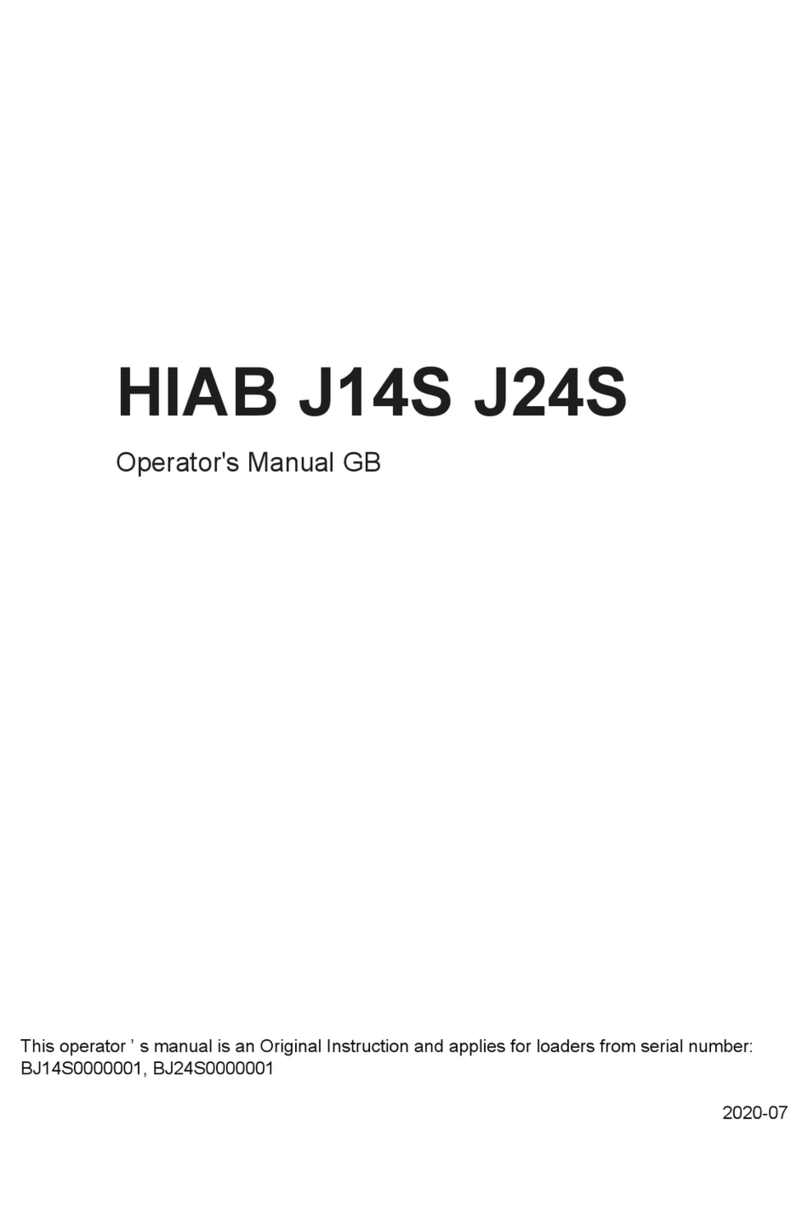
HIAB
HIAB J14S User manual
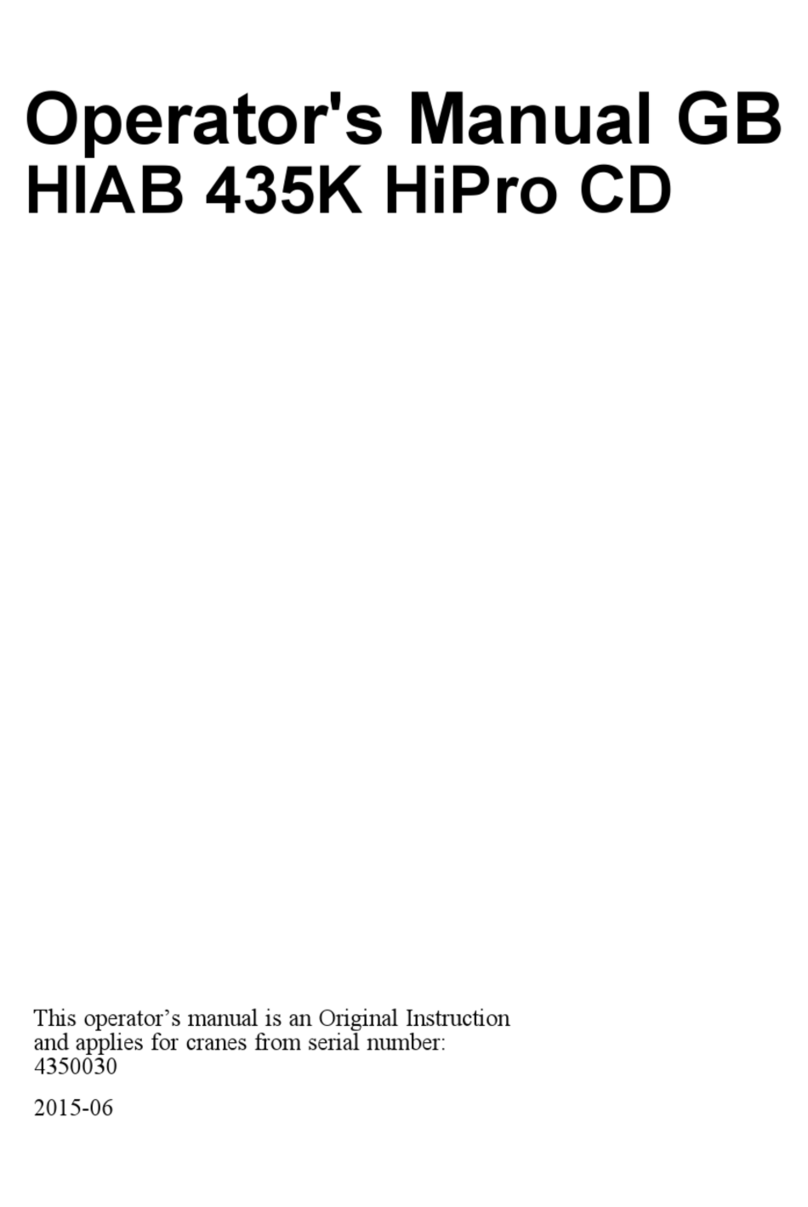
HIAB
HIAB 435K HiPro CD User manual
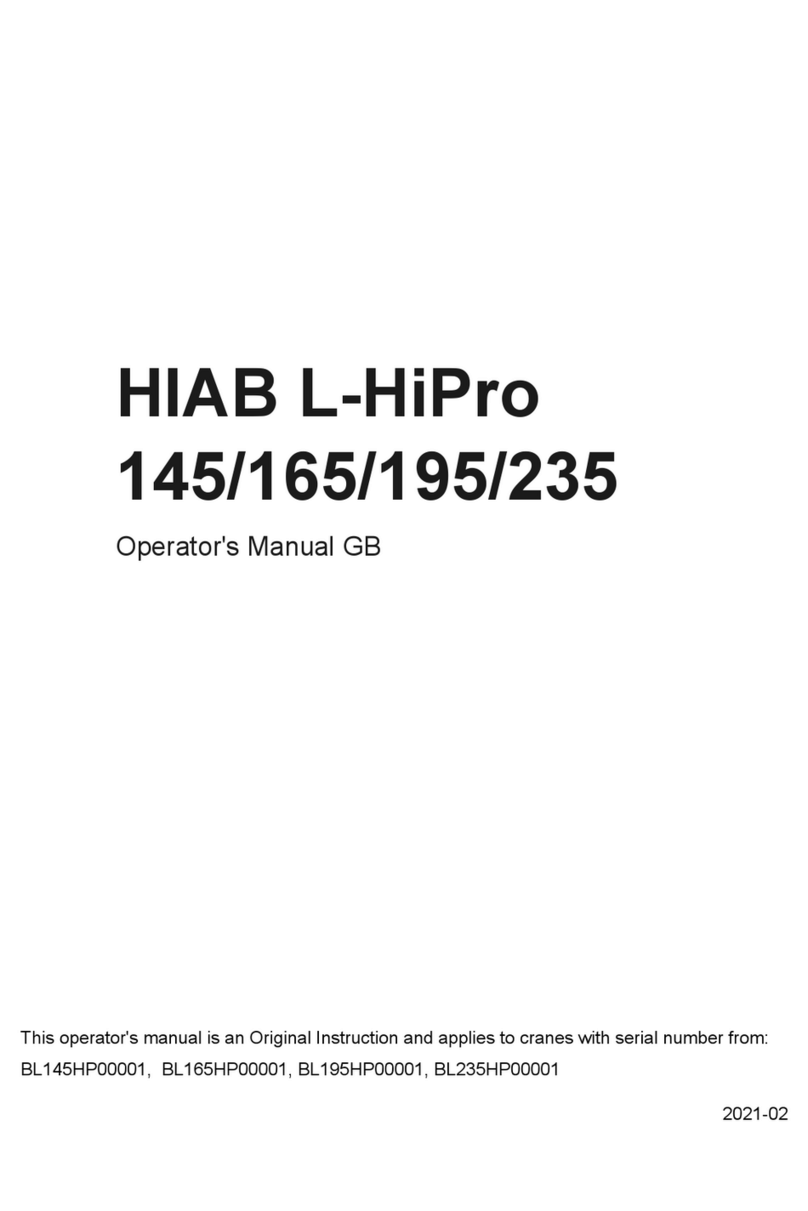
HIAB
HIAB L-HiPro 145 User manual

HIAB
HIAB 160TM Guide
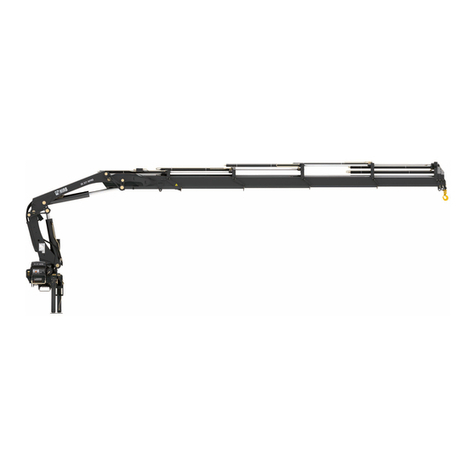
HIAB
HIAB 322 HiPro CD User manual
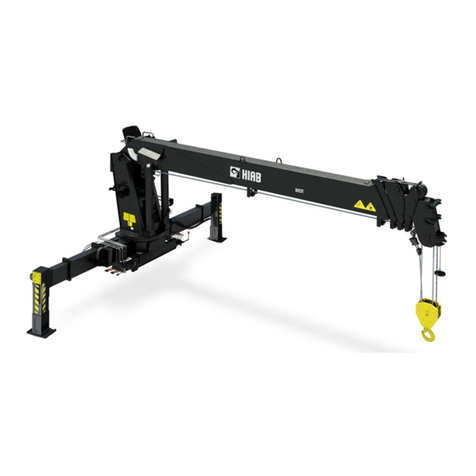
HIAB
HIAB 320T Guide
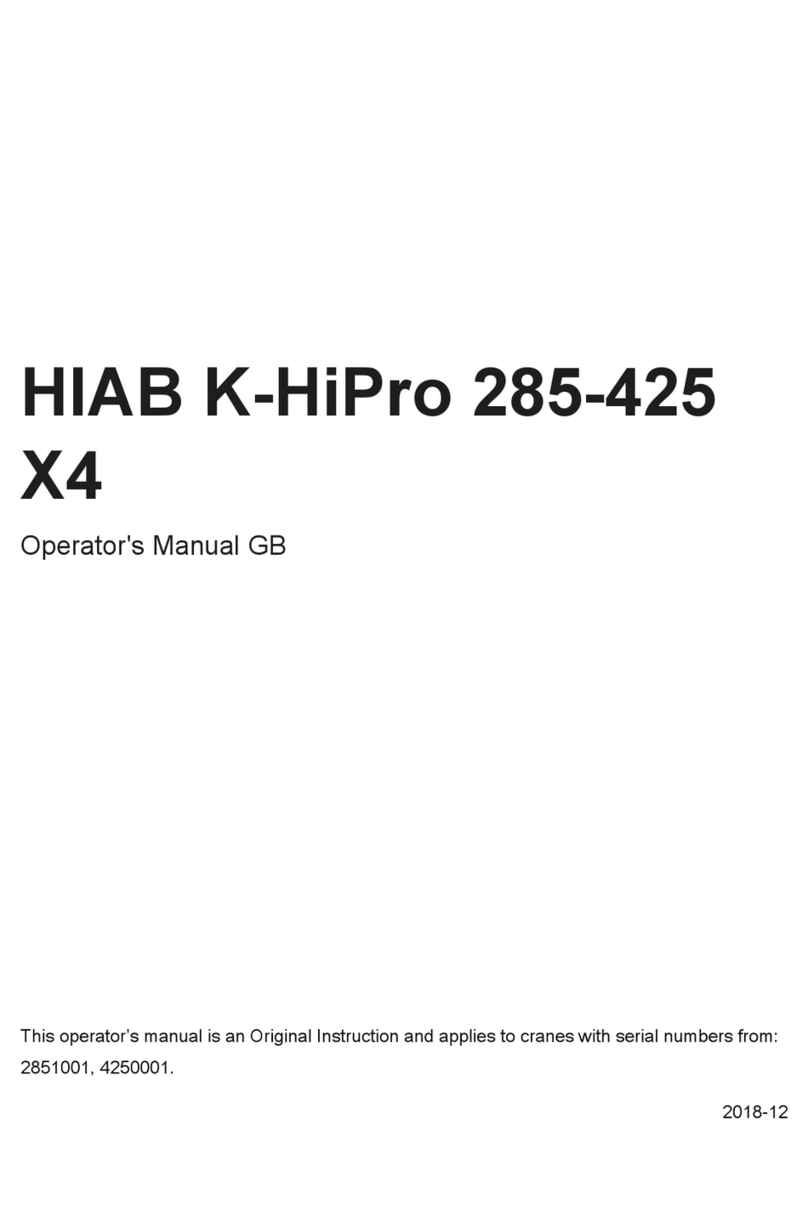
HIAB
HIAB K-HiPro 285-425-4 Series User manual
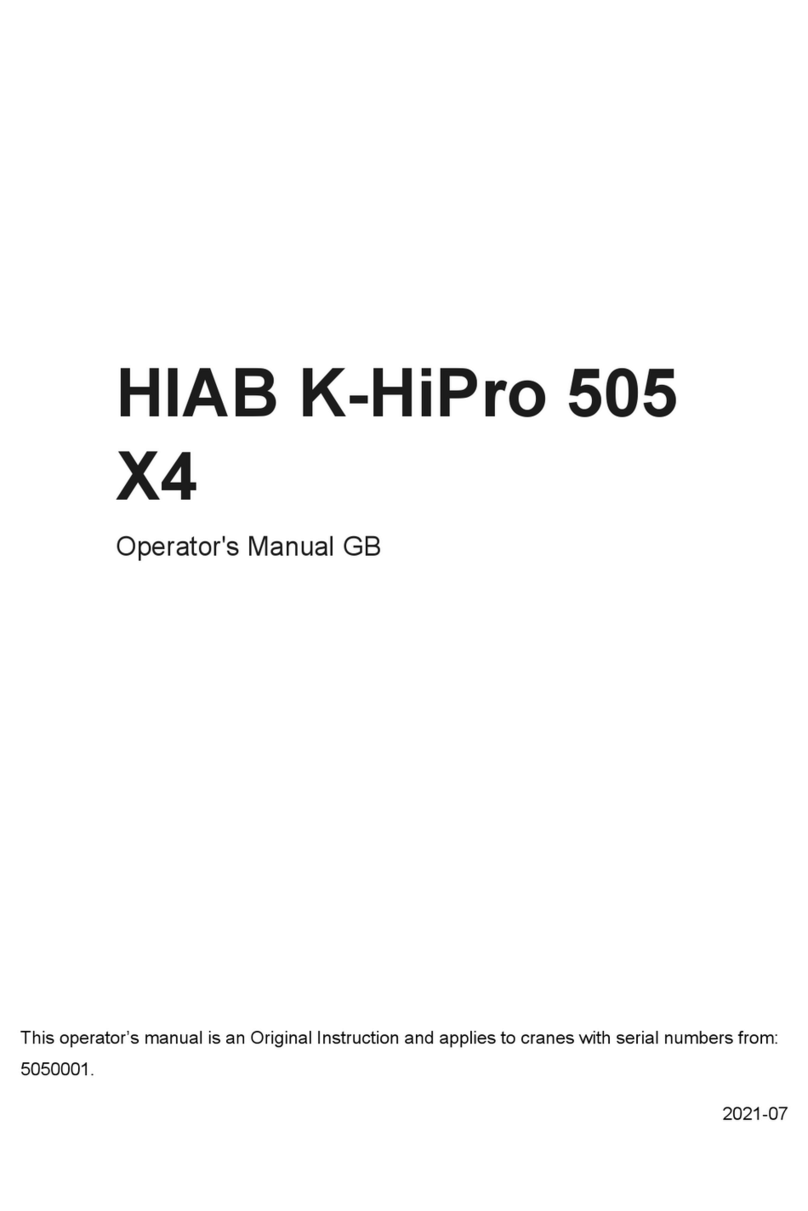
HIAB
HIAB K-HiPro 505 X4 User manual
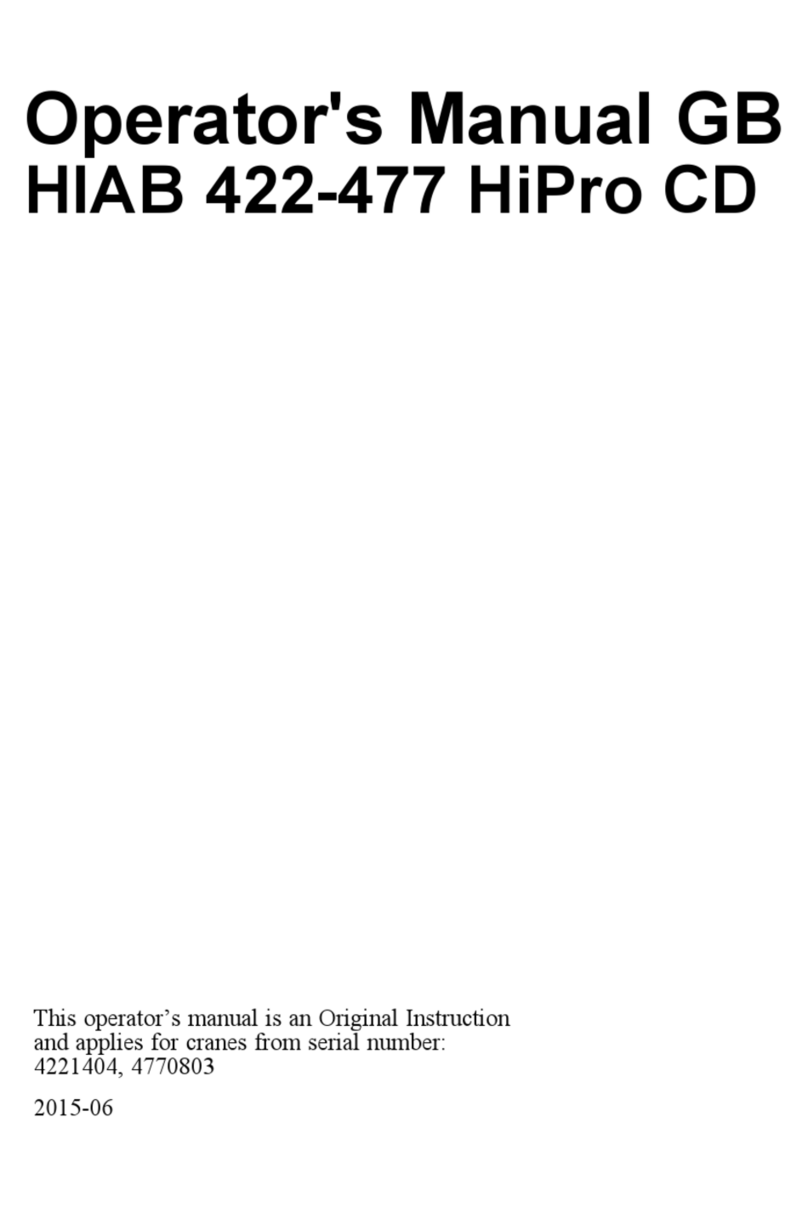
HIAB
HIAB 422-477 HiPro CD User manual
